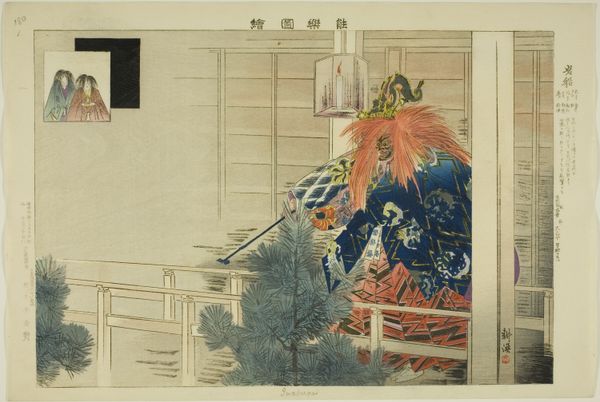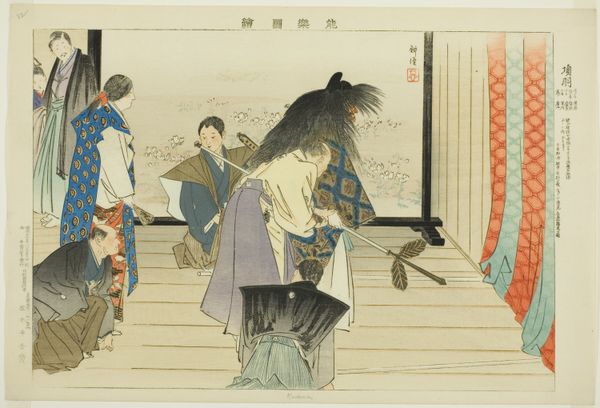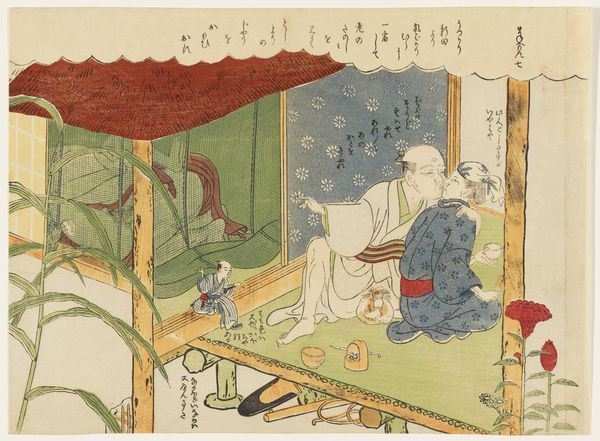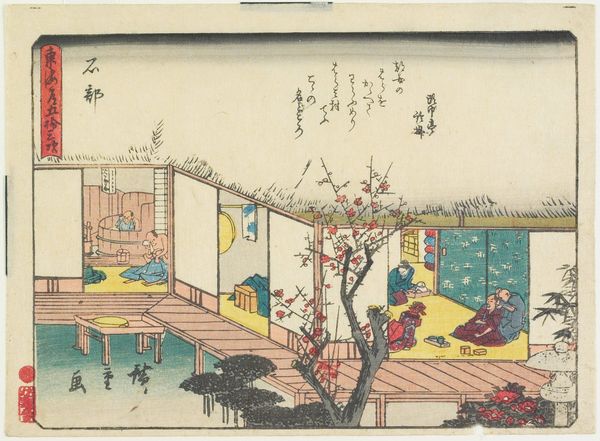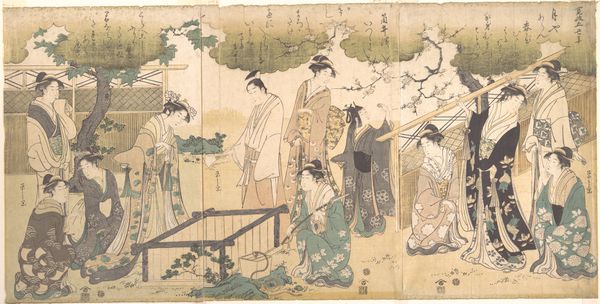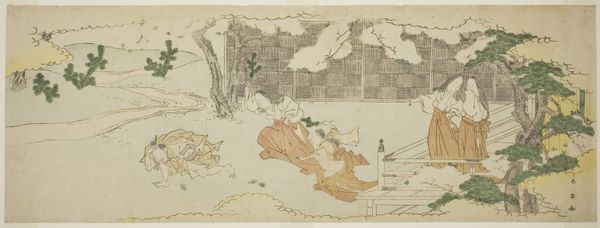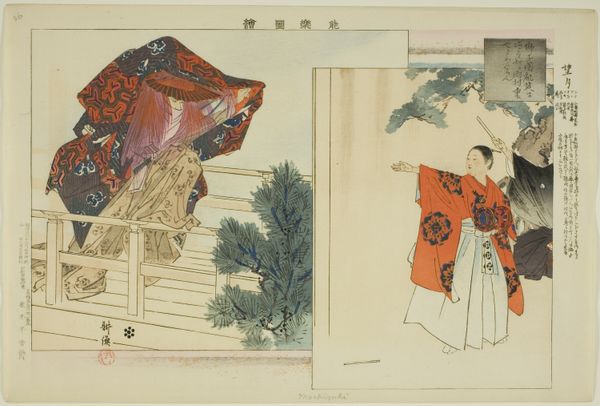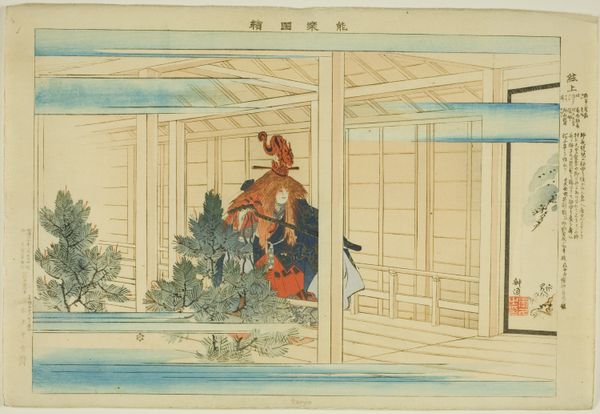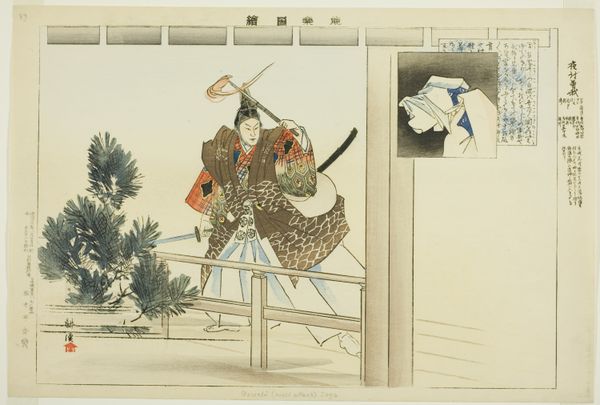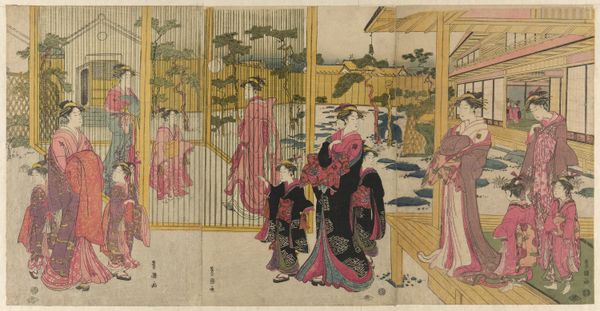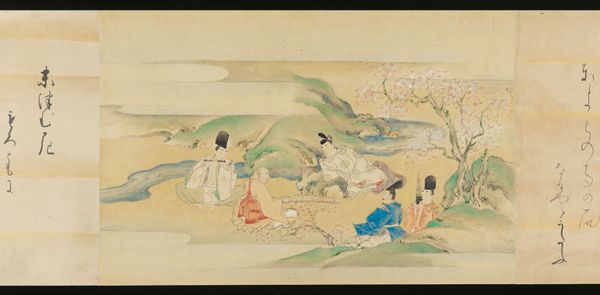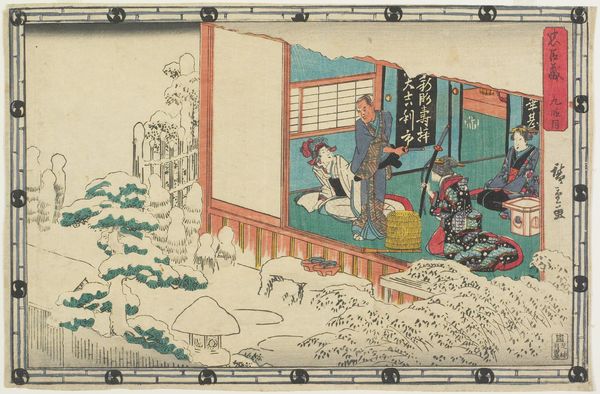
Frontispiece, from the series "Pictures of No Performances (Nogaku Zue)" 1898
0:00
0:00
Dimensions: Approx. 25.2 × 37.4 cm (10 × 14 4/3 in.)
Copyright: Public Domain
Editor: This is "Frontispiece, from the series 'Pictures of No Performances (Nogaku Zue)'" created in 1898 by Tsukioka Kôgyo, currently held at The Art Institute of Chicago. It's a woodblock print, a form of ukiyo-e. There’s something so calm and stage-like about the composition... How do you interpret this work, seeing as it is rooted in ukiyo-e traditions and also reflects a new Meiji era? Curator: I see this as a rich dialogue between tradition and modernity. Ukiyo-e, meaning "pictures of the floating world," was originally associated with pleasure and entertainment. However, Kôgyo's work, especially within the context of the Meiji Restoration, takes on a different weight. Consider that Noh theatre itself, while steeped in history, was being renegotiated as a symbol of Japanese identity in this period. The print showcases the stage of an act during a performance, which is very calm. What I find interesting is the construction and rigidity within the composition that almost references classic Western theatre set design in some form. This approach may be interpreted as adapting old theatrical form in the context of a post-revolution era. Can we consider this staging as a potential reflection of Japanese society at the time? Editor: That's a perspective I hadn't considered. So, the "floating world" now carries the weight of national identity and cultural preservation? Curator: Precisely! And what does it mean to “preserve” when you selectively choose elements of the past for your future? The positioning of the figures and architectural structures—what does that mean? How do these conscious decisions inform our understanding of identity? How can you relate it back to your personal position and perspective? Editor: That makes me consider the role of performance in constructing identity, both individually and nationally. The very act of staging… it's a fascinating lens. Curator: Exactly. And thinking about it today allows for discussions around cultural appropriation, cultural representation, and the power dynamics inherent in those representations. There are many possibilities here. Editor: I’m now seeing a depth in the layers of tradition, national identity and adaptation here that I missed initially. Thanks for helping unpack the work. Curator: Indeed, thank you!
Comments
No comments
Be the first to comment and join the conversation on the ultimate creative platform.
